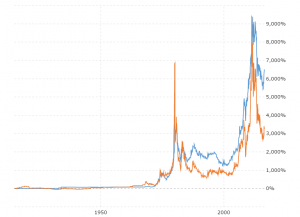Collecting Trade Dollars
The $1 coin remains unpopular in America, unlike the situation in most other countries, where the basic unit has been a coin for many years. Despite that, the history of the American dollar coin is a long one, reaching back into the 19th century. Dollar coins have been made by the Mint since its founding in 1792. In the complex history of American coins, one of the most interesting stories is the story of the Trade Dollar, a coin made by the US Mint, but never intended for use in the United States.
In the later parts of the 19th century, trade with China and other Asian countries was enormous, and of course those goods had to be paid for. Gold coins had always been the way, but after the California Gold Rush there was so much gold available its value fell, and silver became more valuable, in relative terms. This made silver coins suitable for foreign purchases, but the Chinese traders favored Spanish and Mexican silver dollars – at least until the design changed, as the Chinese were very sensitive to even minor design changes, fearing counterfeits.
America had plenty of silver, so the San Francisco Mint, proposed making a silver dollar for use overseas. Since these coins were not expected to be brought back to America, there was a profit to be made, since the face value was greater than the silver content. In 1873 the first of these trade dollars was struck. Several pattern coins were produced to test designs, and the final design was created by William Barber, the Chief Engraver of the Mint at that time. The obverse shows a seated Liberty, on bales of goods and a sheaf of wheat, to symbolize trade. In her hand is an the olive branch of peace, and she gazes across an ocean. The date of minting is shown beneath the figure. The reverse has no denomination, and instead has TRADE DOLLAR at the bottom, beneath a version of the American Eagle, clutching arrows and an olive branch in its claws. Below the eagle is the weight and purity (480 GRAINS 900 FINE). Above is the inscription UNITED STATES OF AMERICA. In all about 1.25 million coins were struck at the different mint facilities.
Most importantly, the Emperor of China approved the coin for circulation, and large quantities were exported to China, and used to purchase Chinese goods which were then brought back to America. Historians have noted that the placing of the weight and purity on the coins seemed pointless, since the markings would have no meaning to the Chinese traders, who relied on their design to recognize the coins.
The plan to keep the coins in China did not work out, and trade dollars soon returned to America, and began being used as payment for workers, for example. They were not popular, and many were melted down and redeemed for dollars. Perhaps the suspicion of the American public for dollar coins began with trade dollars.
These coins are interesting collectors’ items, although due to their popularity and relative scarcity, counterfeits are common, so ‘caveat emptor’ (buyer beware). Many of the coins existing today have chopmarks, put there by Chinese traders testing their purity, as these coins could not be redeemed for dollars, since they were defaced. There are also many coins that have been poorly preserved, or improperly cleaned, which reduces their value. These interesting coins mark a period when the East was being first opened up to the West, and remind us how far China has come in 150 years.
















